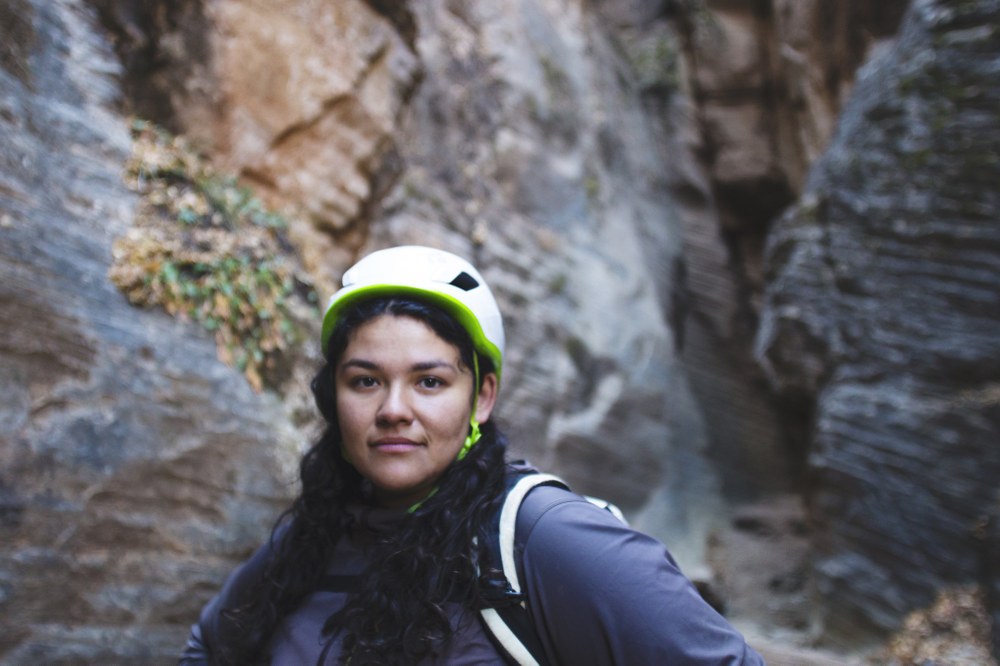
My arms ache. I’m terrified of heights and am gripping too tightly again. By the end of the day my fingers will be bloodied and my legs bruised. Often, my ego is too.
I don’t look like the other climbers. I’m a curvy woman; a woman of color. I have to work really hard to be athletic. As a first generation adventurer, I don’t have the foundation of an outdoor childhood to build upon.
And yet, here I am. And I love it.
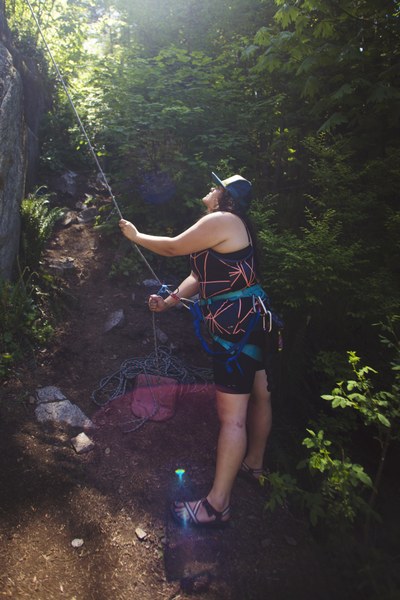
Longing
I spent more than 8,000 days (nearly 30 years) of my life not knowing that I belonged outdoors. But, a few years ago, I did the craziest thing I could imagine: I moved from my home in Kentucky to the wild and rainforested mountains of Juneau, Alaska with AmeriCorps. I didn’t know it at the time, but it would forever change the trajectory of my life.
Growing up in Kentucky, I’d occasionally hike in the Red River Gorge on weekends. The Red is best known as a world-class rock climbing destination. It was just an hour from my house but the idea of climbing seemed like a world away. I’d find myself gaping at people sending the red-tinted sandstone formations with ease. I had always wanted to learn to climb, but the sport seemed unattainable. Like an exclusive, invitation-only club.
The entry point of climbing is a steep hurdle — you have to know someone who can teach you, have the right gear or be able to borrow it from a very generous companion, devote a lot of time learning, and, worst of all, you have to convince your brain that climbing a vertical wall will not, in fact, immediately result in death. Rock climbing seemed like something for really rad people, and not at all like something that I would ever be able to do. Besides, I had never seen a person who looked like me climbing.
Awakening
My journey started on the iconic 3,576-foot Mount Juneau. The trailhead was a short 10-minute walk from my front doorstep, yet I lived in Juneau 10 months before I felt ready. By no means is Mt. Juneau a technical hike. In fact, the trail is akin to the well-known and popular hike near Seattle: Mt. Si. I’d been invited by multiple friends to join their trips, but I had always turned them down. I thought I couldn’t do it. I was afraid to fail.
Days before moving to Tacoma to be closer to family, I decided to give Mt. Juneau a try. It would be my final goodbye to a city I loved so dearly. It was a beautiful, warm summer day in early August. My sister was visiting to begin our joint birthday celebration together (a tradition). With her and my best friend at my side, we tackled the beast that had been taunting me.
We took breaks to catch our breath at nearly every other switchback. Slowly, we climbed the three miles and 3,500 feet of elevation to the summit. Now, this feat seems like no true accomplishment. Back then, it was the hardest hike I’d ever done, while also being easier than I’d expected. It was so surprisingly DOABLE, even if we were doing it slowly.
I don’t look like the other climbers. I’m a curvy woman; a woman of color. I have to work really hard to be athletic. As a first generation adventurer, I don’t have the foundation of an outdoor childhood to build upon.
When we reached the summit, I understood why the trail was so popular to so many of my friends. I was astounded to find that nearly the full city of Juneau was visible from the summit. From there, I could look down over every place I had come to know and love, and look out even further into the stunning archipelago where Juneau resides. I felt so proud, so strong. And, while the summit views were definitely a highlight of the climb, I walked away with something so much more valuable: a sense of strength, accomplishment, inspiration, and confidence that I hadn’t felt before. Looking back, this was a pivotal turning point in my life. It was the beginning of trying even if I thought I might fail. This flip in perspective was monumental and has shaped my life in incredible ways.
Creating an outdoor-centric lifestyle hasn’t been easy for me. It’s been a long learning process and an uphill battle; it's been an awakening. In Juneau I began slowly learning outdoor skills. It was there that I experienced my first backpacking trip, my first kayaking trip, and my first hike over 3,500 feet. The people around me graciously shared their gear, knowledge, and patience. I discovered how much I loved the mountains, and today I spend all of my spare time in the mountains. Yet while breaking through some barriers, others remained.
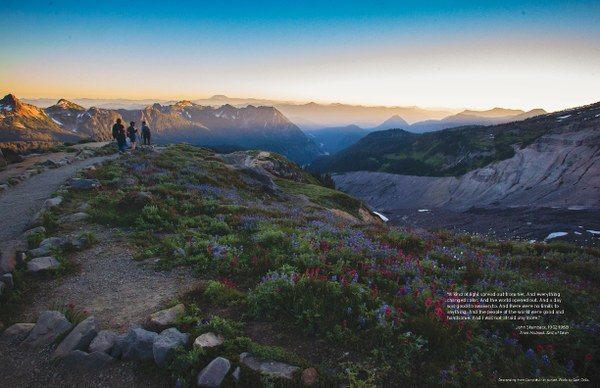
Progressing
Next I tackled a small rock wall at the YMCA in Tacoma, Washington. With sweating, shaking hands, a lot of positive self-talk, and a few weeks of not giving up, I made it to the top of the wall. I failed repeatedly, but this time I didn’t let failure stop me. I was making progress and I was determined.
It was soon after that I learned about The Mountaineers. It was so exciting to find an organization that could teach me all of the skills I wanted to learn and give me opportunities to practice technique. That had been a big barrier for me: I didn’t want to slow anyone down by asking them to teach me. This, finally, was the way to break into the ‘exclusive’ outdoor climbing world I’d always admired from afar.
I started small with a backpacking course. I was flying by the seat of my pants before and figured it was time to learn how to do backpacking correctly. Next, I saw that Tacoma offered sport climbing and I enrolled for the September course. With encouraging instructors and a safe environment to fail in, I thrived. I thought that would be the end of it, then the instructors and other students encouraged me to take the basic climbing course as well. At first I thought, “No, I could never do that. I’m not athletic enough to do that. I don’t know any of those things. That is too far outside of my realm of possibilities.”
Then, I decided if I could push myself to do rock climbing, I could push myself to do this. I enrolled in basic.
Capturing
I sometimes still feel like I have to prove that I belong in the exclusive climbers club. But I have one special tool that perhaps few other ‘outsiders’ have in their toolbox: photography.
Without realizing it, photography acted like an entrance qualifier into the outdoor world. It’s the proof that I live and breathe the outdoors, even when I might not look like it. The pattern is clear. People take me more seriously after they see my work. They’re much more likely to consider me as a climbing partner, or reach out to me as an adventure companion, after following me on Instagram.
What I’ve realized more recently is that my photography not only serves as my entry ticket fitting into the outdoor world, but also serves as a tool to pave the way for those behind me. By sharing my journey — my dark-haired, curvy likeness on mountain summits and climbing crags — I'm able to prove that it’s a place we can infiltrate and belong.
I started taking photos around the age of 10. I would steal my dad’s film camera or spend my allowance on disposable cameras to take photos of my friends. Eventually, my dad bought me my own so that I would stop borrowing his.
In high school I joined the yearbook staff and took photos of any and everything that I could. Sports, plays, speakers, special events, and candids around campus. I continued being a part of the yearbook staff into college, where I would become their Photo Editor.
I definitely wouldn't say my photos were "professional" by any stretch of the imagination. But I liked it. So I kept going. There were years — hundreds of hours of practice — before I really started figuring out how to best use a camera.
It wasn't until I moved to Juneau that I truly started honing my craft. With wilderness surrounding me, I'd finally found my muse. Instead of taking photos of anything and everything, I started focusing on what I really cared about: humans dwarfed by big landscapes. The two inform one another, give scale, illustrate depth, and show the journey. I wanted to make the photos illicit the same feelings in the viewer that I felt myself in those moments: astounded, awed, humbled, curious. So I spent time working, practicing, and learning how to make that happen.
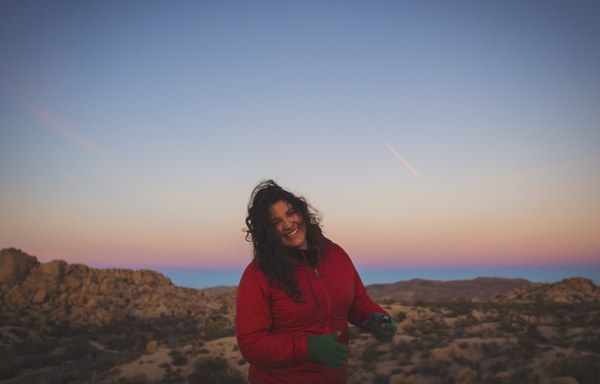
I'm not normally very good at anything when I first begin. I am not someone who picks up something new and thrives at it soon after. Things take practice for me — a lot of practice. I've been rock climbing regularly for two years now and I still struggle to make it up a 5.8 at Edgeworks. But I like rock climbing, and I like mountaineering so I keep going. I have fun and I'm hoping eventually, after eight years of dedication, as with photography, I can get better at them, too.
The thing about both photography and climbing is that SO much behind the scenes work is done to make the big thing possible. Good photos take a lot of work. You have to know your camera well and learn how to use its tools, to know how to get the exact mood that you're envisioning for a shot. On top of that, you spend a significant time post processing to bring the photos to life. The reality of being a good photographer is spending 4x the amount of time behind a computer as you did shooting. Playing outside is very much the same – you have to do a lot of practicing to get not even ‘good,’ but decent. It comes a lot more naturally to some than it does to others. Obviously, if you’re heavier it’s a lot more weight to pull up a wall, and definitely to pull up a mountain.
Belonging
I still don’t look like a typical mountaineer or rock climber. I’ve noticed this in nearly every class, on nearly every climb, with nearly every group. Frequently, I look around and find myself surrounded by a sea of fit, white men and question what I’ve gotten myself into. I see people look at me often. Sizing me up. Curiously watching to see if I’ll fail or succeed. Intrigued that I’m here, in their sport, because I don’t fit the mold.
The outdoor industry wasn’t built for colored, curvy women. Finding gear that fits my body is difficult, and finding other minorities to look up to and inspire me is even harder. But, when I look around and feel like I don’t belong in this world, I remind myself that by simply being there I am changing the dynamic. By participating I can show that outdoor recreation is a place for everyone. I can be inviting to others like me.
If I’m not pushing my limits, I can’t expand them. If I’m not getting tired, I’m not getting stronger.
When the media doesn’t show the difficulties of being a first generation adventurer, you have few tools to help connect with a community of people who understand you. Each one of us who pushes through the discomfort paves the way for others to follow behind us. Without stories, you’d never know that anyone else was trying to work through the same barriers that you are.
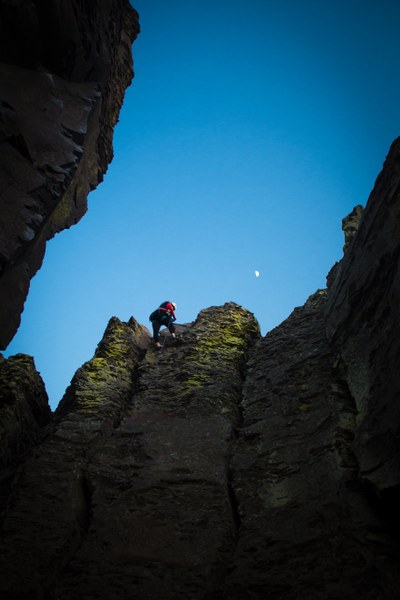
I spent more than 8,000 days of my life not knowing that I belonged outdoors. I’ve spent a great number of days since considering why it took so long to arrive at the place I feel is so much a part of me. The invisible barriers are some of the hardest to overcome. They’re silent. But this outdoor world is for me. This world of grand adventures and big dreams. I don’t have to fit the mold to get there. I am the mold. The mountains have grand lessons to teach me about myself, my own abilities, and my bravery.
Rock climbing was more to me than just a new skill — it was a way to conquer my tremendous fear of heights. It also hosted an even bigger notion — if I could succeed at climbing I could break down so many other barriers. I could defy not only gravity, but my own notions of who belongs in the category of ‘adventurer.’
If I’m not pushing my limits, I can’t expand them. If I’m not getting tired, I’m not getting stronger. And most importantly, if I'm not failing, I'm not trying hard enough. I am failing. And I’m loving (almost) every minute of it.
To see more inspiration from Sam, follow her on Facebook, , or visit her website.
This article originally appeared in our Summer 2018 issue of Mountaineer magazine. To view the original article in magazine form and read more stories from our publication, visit our magazine archives.
Add a comment
Log in to add comments.Wonderfully inspiring story, Sam! Thank you for sharing this.
 Sam Ortiz
Sam Ortiz